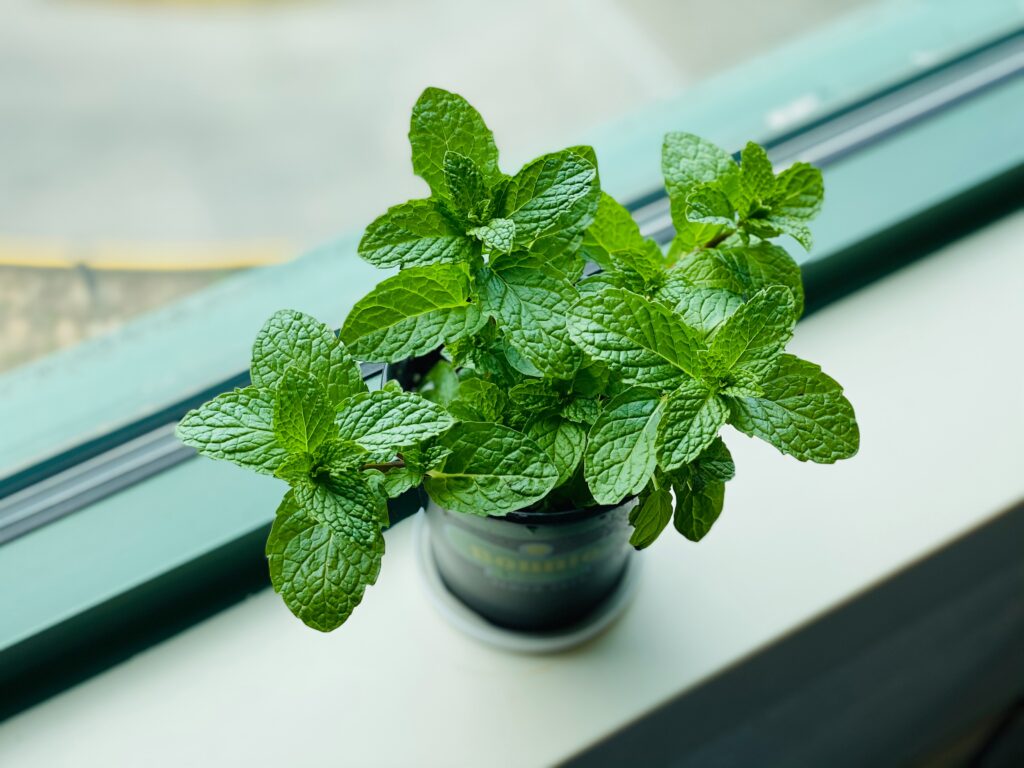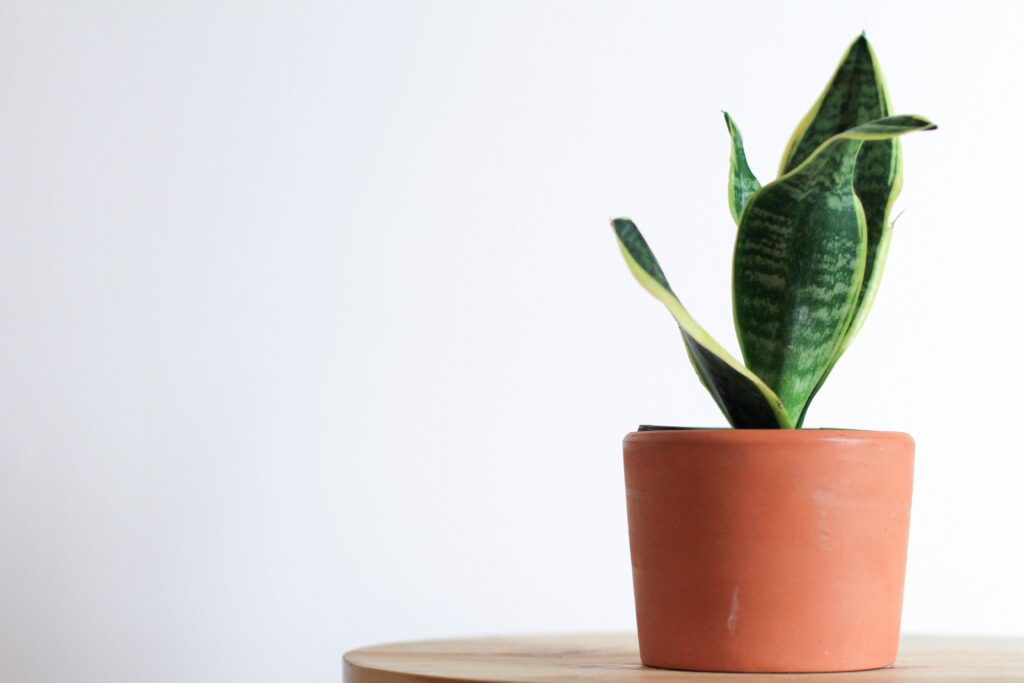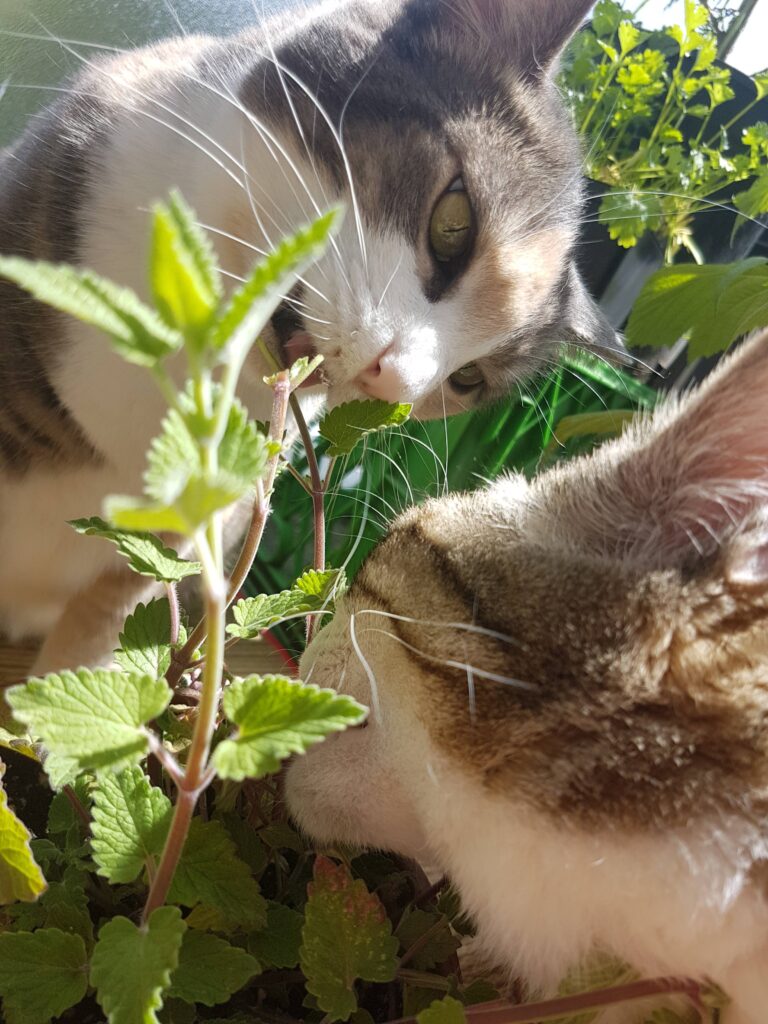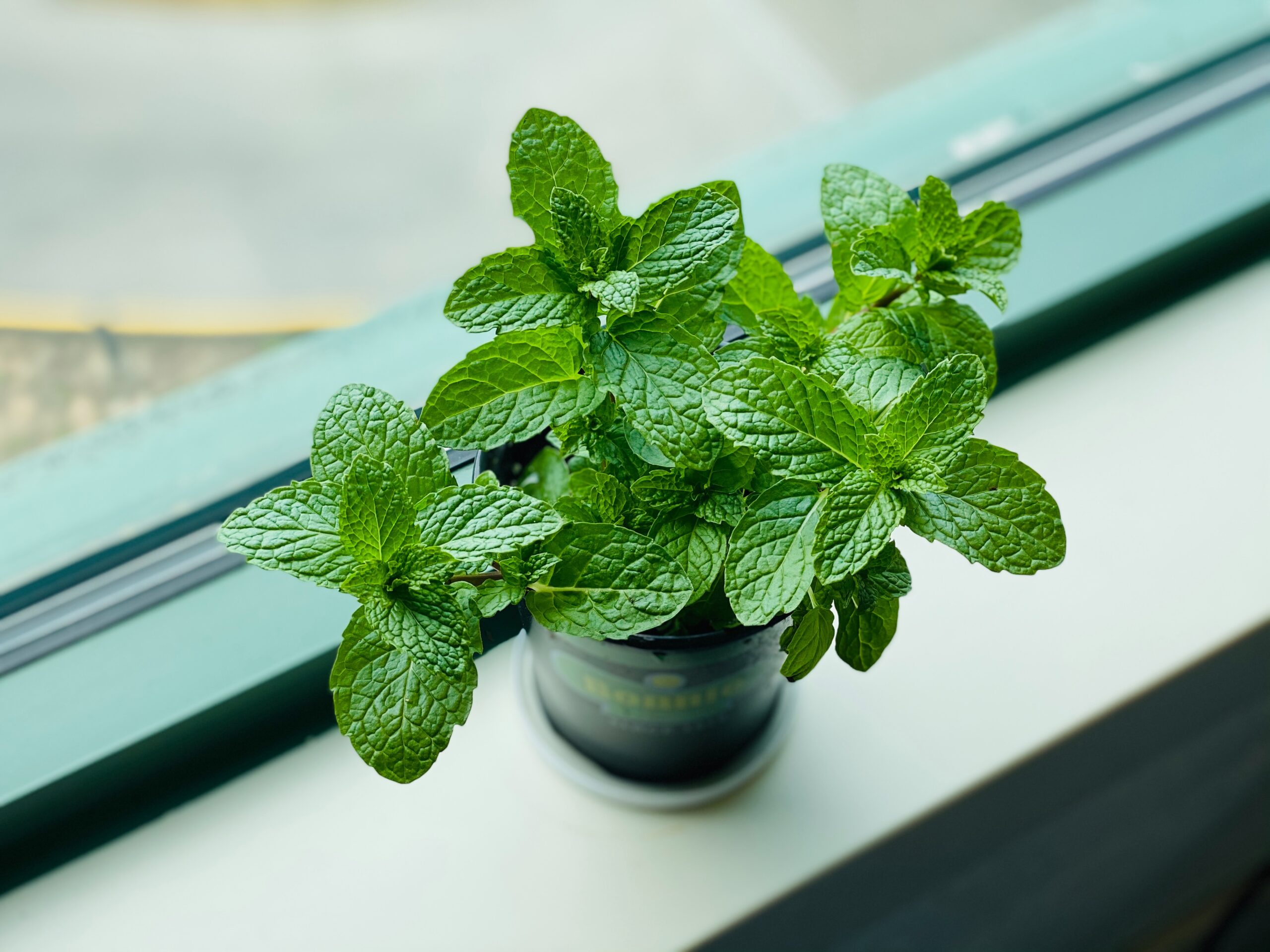Growing sensory aromatic plants in your home can add a delightful fragrance to your living space and provide a soothing atmosphere. Here are some popular aromatic plants that you can grow indoors:
- Lavender (Lavandula): Known for its calming properties, lavender produces lovely purple flowers and has a relaxing scent. It thrives in well-drained soil and requires ample sunlight.
- Mint (Mentha spp.): Mint plants, such as spearmint or peppermint, have a refreshing aroma and can be used in teas, culinary dishes, or as air fresheners. They prefer moist soil and moderate sunlight.
- Rosemary (Rosmarinus officinalis): Rosemary is an evergreen herb with needle-like leaves and a woody fragrance. It requires plenty of sunlight and well-draining soil.
- Jasmine (Jasminum spp.): Jasmine plants produce beautiful white flowers with an intoxicating fragrance. They need bright light and a slightly humid environment to thrive.
- Lemon balm (Melissa officinalis): Lemon balm leaves have a strong lemony scent and can be used in teas, potpourris, or to repel insects. It prefers partial shade and moist soil.
- Geranium (Pelargonium spp.): Geraniums have a wide variety of scents, including rose, lemon, or mint. They are easy to grow indoors, requiring moderate light and well-drained soil.
- Thyme (Thymus spp.): Thyme is a versatile herb with a pleasant aroma. It can be used in cooking or dried for potpourris. Thyme prefers direct sunlight and well-drained soil.
- Eucalyptus (Eucalyptus spp.): Eucalyptus plants have aromatic leaves with a minty scent. They require bright light and well-drained soil.
- Scented geranium (Pelargonium spp.): Scented geraniums come in various fragrances, such as rose, lemon, or chocolate. They need bright light and well-drained soil.
- Basil (Ocimum basilicum): Basil plants have a distinct aroma and are commonly used in culinary dishes. They require bright light and consistent moisture.
Remember to provide the appropriate growing conditions, including adequate sunlight, water, and well-draining soil, for these aromatic plants to flourish indoors. Enjoy the pleasant scents and benefits they bring to your home!
Which Herbs Can I Grow Indoors?

Growing herbs indoors is a great way to have fresh herbs at your fingertips all year round. Here is a list of my favorite herbs that smell amazing and can easily be grown indoors successfully:
- Basil (Ocimum basilicum): Basil is a popular herb used in various cuisines. It grows well indoors and requires bright light, adequate watering, and well-draining soil.
- Parsley (Petroselinum crispum): Parsley is a versatile herb used as a garnish or in cooking. It can be grown indoors with moderate light and regular watering.
- Chives (Allium schoenoprasum): Chives have a mild onion-like flavor and are great for adding a touch of freshness to dishes. They can be grown indoors with moderate light and regular watering.
- Mint (Mentha spp.): Mint is a fast-growing herb that can be quite invasive, so it’s best to grow it in a container indoors. It prefers moist soil and partial sunlight.
- Thyme (Thymus spp.): Thyme is a flavorful herb used in many culinary dishes. It requires bright light and well-draining soil to thrive indoors.
- Rosemary (Rosmarinus officinalis): Rosemary is an aromatic herb that adds a unique flavor to dishes. It needs bright light, well-draining soil, and good air circulation when grown indoors.
- Oregano (Origanum spp.): Oregano is a popular herb in Mediterranean cuisine. It can be grown indoors with bright light and well-draining soil.
- Sage (Salvia officinalis): Sage has a strong aroma and is often used in savory dishes. It requires bright light and well-draining soil when grown indoors.
- Cilantro/Coriander (Coriandrum sativum): Cilantro leaves and coriander seeds are used in various culinary preparations. It prefers cooler temperatures and moderate light when grown indoors.
- Dill (Anethum graveolens): Dill is an herb commonly used in pickling and seafood dishes. It requires bright light and regular watering when grown indoors.
Remember to provide suitable growing conditions for your indoor herbs, including adequate sunlight or artificial lighting, proper watering, and well-draining soil. With a little care and attention, you can enjoy a bountiful herb garden right in your home.
Which Houseplants have the nicest smell?

Houseplants with pleasant fragrances can enhance the ambiance of your living space. Here are some houseplants known for their delightful scents:
- Gardenia (Gardenia spp.): Gardenias have creamy white flowers with a strong, sweet scent. They prefer bright indirect light and consistent humidity.
- Arabian or Oriental Lily (Lilium spp.): Lilies are known for their large, showy flowers and captivating fragrance. Arabian and Oriental lilies, in particular, have strong and sweet scents. They need bright light and well-drained soil.
- Hoya (Hoya spp.): Hoya plants, also known as Wax Plants, have waxy flowers that release a pleasant fragrance, especially in the evening. They prefer bright indirect light and well-draining soil.
- Scented Geranium (Pelargonium spp.): Scented geraniums produce fragrant leaves with scents like rose, lemon, or chocolate. They need bright light and well-drained soil.
- Lemon Verbena (Aloysia citrodora): Lemon verbena has citrus-scented leaves that release a strong lemon fragrance. It requires bright light and moderate watering.
- Citrus Trees (Citrus spp.): Growing small citrus trees indoors, such as lemon, lime, or orange, can fill your home with a fresh and uplifting citrus aroma. They need bright light, proper watering, and well-draining soil.
- Osmanthus (Osmanthus fragrans): Osmanthus is an evergreen shrub with small white flowers that emit a sweet, apricot-like fragrance. It prefers bright light and well-drained soil.
Remember to consider the specific care requirements of each plant, including light, humidity, watering, and soil conditions, to ensure they thrive and maintain their fragrant qualities indoors.
What causes Plants to have a smell?
Plants produce fragrances or scents as a result of various biological processes. The primary reasons plants have smells are:
- Essential oils: Many plants contain essential oils, which are aromatic compounds produced in specialized structures such as glandular trichomes or oil glands. These oils contribute to the scent of the plant. They are often stored in specific plant parts, such as leaves, flowers, or fruits.
- Volatile organic compounds (VOCs): Plants release volatile organic compounds into the air, which contribute to their distinct smells. These compounds are emitted by plant tissues and play roles in communication, defense mechanisms, or attracting pollinators. Examples of VOCs include terpenes, alcohols, esters, and aldehydes.
- Flowering and pollination: Many plants produce fragrances to attract pollinators, such as bees, butterflies, or birds. The scent helps in attracting these animals to the flowers for pollination, which is crucial for the plant’s reproductive cycle.
- Defense mechanisms: Some plants produce scents as a defense mechanism against herbivores or pests. These smells may repel insects or animals that might feed on the plant or attract predators of the herbivores.
- Environmental factors: Environmental factors, such as temperature, humidity, and light, can influence the production and release of scents by plants. For example, some plants emit stronger fragrances during specific times of the day or in response to changes in light or temperature.
It’s important to note that the scents produced by plants can serve multiple functions simultaneously. For instance, a plant’s fragrance may attract pollinators while also repelling pests. The specific combination of compounds and the intensity of the scent can vary significantly among different plant species and even among different individuals within the same species.
Can the Smell of Plants Relieve my Headache?

While the smell of plants can have various effects on individuals, including promoting relaxation and reducing stress, it is important to note that the effectiveness of plant scents in relieving headaches can vary from person to person. Some people may find certain plant scents soothing and beneficial for their headaches, while others may not experience the same effects.
Certain aromatic plants and their essential oils are commonly associated with potential headache relief or relaxation. For example:
- Lavender: Lavender is often used for its calming properties and may help promote relaxation, which could potentially alleviate headaches triggered by stress or tension.
- Peppermint: Peppermint has a cooling and refreshing scent that may provide a soothing effect. Some individuals find it helpful for relieving tension headaches.
- Eucalyptus: The invigorating scent of eucalyptus may help ease congestion and promote a sense of relaxation, potentially providing relief for headaches associated with sinus congestion.
- Rosemary: Rosemary has an herbal and invigorating aroma. Some individuals find its scent stimulating and helpful for combating headaches caused by fatigue or mental exhaustion.
- Chamomile: Chamomile has a gentle and soothing fragrance that may aid in relaxation and relieve stress-related headaches.
It’s important to remember that individual responses to scents can vary, and what works for one person may not work for another. If you’re prone to frequent or severe headaches, it’s always a good idea to consult with a healthcare professional to determine the underlying causes and appropriate treatments for your specific situation.
What Effects do Aromatic Plants have on Humans?
Aromatic plants can have various effects on humans, both physiological and psychological. Here are some common effects that aromatic plants and their scents can have:
- Mood enhancement: Certain scents from aromatic plants can have mood-enhancing effects. Pleasant aromas can evoke positive emotions, improve mood, and promote a sense of well-being. Aromatherapy often utilizes the scents of aromatic plants to enhance mood and promote relaxation.
- Stress reduction: Aromatic plants are known to have calming and stress-reducing effects. Inhaling soothing scents can help relax the mind and body, reduce feelings of anxiety and stress, and promote a sense of calmness.
- Improved focus and concentration: Some scents, such as rosemary and peppermint, are believed to improve focus, mental clarity, and concentration. These scents may help stimulate the brain, increase alertness, and enhance cognitive performance.
- Relaxation and sleep promotion: Certain scents, like lavender, chamomile, and jasmine, are associated with relaxation and improved sleep quality. Inhaling these scents before bedtime or during relaxation sessions can help induce a state of calmness and support better sleep.
- Physical effects: The scents of certain plants, such as eucalyptus or menthol, can have physical effects on the body. They may help clear nasal congestion, open up the airways, and provide relief from respiratory symptoms.
- Memory and recall: Some scents have been shown to have an impact on memory and recall. For example, the scent of rosemary has been associated with improved memory performance and cognitive function.
- Sensory pleasure: Aromatic plants provide sensory pleasure through their pleasant scents. Enjoying the fragrance of aromatic plants can evoke positive sensory experiences, uplift the spirits, and create a more enjoyable environment.
It’s important to note that individual responses to scents can vary, and the effects of aromatic plants can be subjective. Additionally, some people may have sensitivities or allergies to certain scents, so it’s important to use aromatic plants and their scents in moderation and according to personal preferences and tolerance levels.
What Effects do Aromatic Plants have on Cats and Dogs?

Plants can have various effects on cats, including both positive and negative impacts. Here are some key effects that plants can have on cats:
- Environmental enrichment: Many cats are naturally attracted to plants and enjoy exploring their surroundings. Plants can provide a stimulating environment for cats, offering new scents, textures, and hiding places. They can serve as a source of mental and sensory stimulation for cats, which is beneficial for their overall well-being.
- Chewing and ingestion: Pets are known to be curious and may chew on plants. While some plants are safe for cats, others can be toxic and pose a risk if ingested. It’s important to ensure that any plants in your home are non-toxic to cats to prevent potential harm.
- Behavioral effects: Some animals may exhibit behavioral changes or reactions to certain plants. For example, the scent of certain plants, such as catnip (Nepeta cataria), can induce a euphoric response in cats, leading to increased playfulness, rolling, and rubbing against the plant. Not all cats are affected by catnip, as its effects are inherited and not all cats possess the sensitivity to it.
- Toxicity risks: Some plants can be toxic to cats and can cause a range of adverse effects if ingested. Common toxic plants for cats include lilies, certain species of lilies, azaleas, rhododendrons, and poinsettias. It’s crucial to be aware of any potentially toxic plants and ensure they are kept out of reach of your feline companions.
- Digestive issues: Ingesting certain plants can lead to digestive upset in cats. Symptoms may include vomiting, diarrhea, and stomach discomfort. It’s important to monitor your cat’s behavior around plants and seek veterinary attention if any adverse effects occur.
- Allergic reactions: Cats and Dogs, like humans, can have allergies to certain plants or their pollen. This may lead to symptoms such as sneezing, itching, watery eyes, or respiratory issues. If you notice any signs of allergies in your cat, it’s advisable to consult with a veterinarian.
To provide a safe environment for your cat, it’s recommended to research and ensure that any plants you have in your home are non-toxic to cats. Additionally, consider providing alternative cat-friendly plants, such as cat grass (wheatgrass or oat grass), that cats can safely nibble on. Monitoring your cat’s behavior around plants and promptly addressing any concerns or adverse reactions is essential for their well-being.
Can the Smell of Plants Affect my Mood?
Yes, the smell of plants can indeed affect your mood. The sense of smell is closely linked to our emotions and can evoke powerful responses. Here’s how the smell of plants can impact your mood:
- Relaxation and stress reduction: Certain plant scents have calming properties that can help reduce stress and promote relaxation. Scents like lavender, chamomile, jasmine, and rose can have a soothing effect on the nervous system, helping to alleviate anxiety and induce a sense of tranquility.
- Uplifting and energizing: Some plant scents can have an uplifting effect on mood, providing a boost of energy and improving focus. Scents like citrus (lemon, orange), peppermint, eucalyptus, and rosemary are known for their invigorating qualities that can help combat fatigue and enhance mental clarity.
- Mood enhancement and happiness: Pleasant and enjoyable scents from plants can positively influence mood and evoke feelings of happiness. Aromas such as fresh flowers, fruity scents, or sweet herbs can create a positive and cheerful atmosphere, enhancing your overall mood.
- Memory and nostalgia: The scent of certain plants can trigger memories and emotions, evoking a sense of nostalgia. The familiar aroma of a particular plant may remind you of a special place, a loved one, or a pleasant experience, leading to feelings of happiness and contentment.
- Sensory pleasure: Simply enjoying the pleasant scent of plants can bring about a sense of pleasure and well-being. The act of smelling delightful plant aromas can be a form of sensory stimulation that enhances your mood and adds a positive dimension to your environment.
It’s important to note that individual responses to scents can vary, and personal preferences play a significant role. Different scents can have different effects on different individuals, so it’s essential to find the plant scents that resonate with you and create a mood-enhancing atmosphere in your living space.
What Houseplants are best at cleaning the air in my home?

Certain houseplants are known for their ability to purify the air by removing pollutants and improving indoor air quality. Here are some houseplants that are considered effective at cleaning the air in your home:
- Snake Plant (Sansevieria spp.): Snake plants are known for their ability to filter formaldehyde, benzene, xylene, toluene, and trichloroethylene from the air. They are low-maintenance and can thrive in various lighting conditions.
- Peace Lily (Spathiphyllum spp.): Peace lilies are excellent at removing airborne toxins like formaldehyde, benzene, and carbon monoxide. They also add humidity to the air. Peace lilies prefer moderate to low light conditions.
- Spider Plant (Chlorophytum comosum): Spider plants are effective at removing formaldehyde, xylene, and carbon monoxide from the air. They are easy to grow and prefer bright, indirect light.
- Aloe Vera (Aloe vera): Aloe vera not only has air-purifying properties but also releases oxygen at night, making it beneficial for improving sleep quality. It filters formaldehyde and benzene and prefers bright, indirect light.
- English Ivy (Hedera helix): English ivy can help reduce airborne mold and formaldehyde levels. It is particularly effective in rooms with low light conditions, such as bathrooms or bedrooms.
- Boston Fern (Nephrolepis exaltata): Boston ferns are known for their air-purifying qualities, especially for removing formaldehyde and xylene. They prefer high humidity and indirect light.
- Bamboo Palm (Chamaedorea seifrizii): Bamboo palms excel at filtering formaldehyde, benzene, and trichloroethylene from the air. They thrive in bright, indirect light and humid conditions.
- Rubber Plant (Ficus elastica): Rubber plants are effective at removing formaldehyde from the air. They prefer bright, indirect light and moderate watering.
Remember that while houseplants can contribute to cleaner air, their impact may be limited compared to proper ventilation and the use of dedicated air purifiers. To maximize the air-purifying potential of houseplants, it’s recommended to have multiple plants throughout your home and to provide them with the appropriate care they need to thrive.
Which Houseplants are safer for Allergy Sufferers?
If you suffer from allergies, it’s important to choose houseplants that are less likely to trigger or worsen your symptoms. While individual sensitivities can vary, here are some houseplants that are generally considered to be good choices for allergy sufferers:
- Areca Palm (Dypsis lutescens): Areca palms are known to be one of the most allergy-friendly plants. They have minimal pollen production and can help improve indoor air quality.
- Peace Lily (Spathiphyllum spp.): Peace lilies are not known to be significant allergens. However, some individuals with high sensitivity may experience mild reactions. Removing the flowers can help reduce pollen release.
- Bamboo Palm (Chamaedorea seifrizii): Bamboo palms are considered allergy-friendly and have a low potential for causing allergies. They can help filter indoor air pollutants and add a tropical touch to your space.
- Spider Plant (Chlorophytum comosum): Spider plants are generally well-tolerated by individuals with allergies. They have a low potential for triggering allergic reactions and are effective at purifying the air.
- Boston Fern (Nephrolepis exaltata): Boston ferns are considered to be relatively safe for allergy sufferers. They can help improve humidity levels and filter indoor air pollutants.
- Dracaena (Dracaena spp.): Certain varieties of dracaena, such as Dracaena marginata or Dracaena deremensis, are known to be less likely to cause allergies. However, it’s advisable to avoid species with high pollen production, such as Dracaena fragrans.
- Snake Plant (Sansevieria spp.): Snake plants have low allergenic properties and can help remove toxins from the air. They are relatively easy to care for and can tolerate various light conditions.
It’s important to note that while these plants are generally considered more suitable for individuals with allergies, everyone’s sensitivities can vary. It’s recommended to observe your personal reactions and avoid any specific plants that may trigger your allergies. Additionally, regular dusting of leaves and keeping a clean environment can help minimize potential allergens.
Which plants are the worst for Allergy Sufferers?

For individuals with allergies, it’s important to be aware of certain houseplants that have the potential to trigger or worsen allergy symptoms. Here are some houseplants that are known for their higher allergenic properties:
- Ragweed (Ambrosia spp.): Ragweed is a common outdoor plant that produces significant amounts of pollen and is a notorious allergen. It’s important to avoid bringing ragweed indoors as it can exacerbate allergy symptoms.
- Certain Ferns: While Boston ferns are generally considered safe for allergy sufferers, other ferns like Maidenhair ferns (Adiantum spp.) or Asparagus ferns (Asparagus spp.) may produce spores that can trigger allergies in some individuals.
- Certain Palms: While most palms are generally well-tolerated, some individuals may be sensitive to the pollen produced by certain palm species, such as date palms (Phoenix spp.) or fan palms (Washingtonia spp.).
- Yucca Plant (Yucca spp.): Yucca plants can produce airborne pollen that may trigger allergies in some people. It’s advisable to avoid this plant if you are prone to yucca pollen allergies.
- Ficus Tree (Ficus spp.): Ficus trees, including the popular Ficus benjamina (Weeping Fig), can release airborne allergenic compounds such as latex that may cause allergic reactions in sensitive individuals.
- Amaryllis (Hippeastrum spp.): Amaryllis plants produce pollen that can trigger allergies in susceptible individuals. It’s best to avoid this plant if you have known allergies to Amaryllis pollen.
- Scented Geraniums (Pelargonium spp.): Scented geraniums, while prized for their aromatic leaves, can cause allergic reactions in some individuals, especially those with sensitivities to fragrances or essential oils.
It’s important to remember that individual sensitivities can vary, and not everyone will react to the same plants. If you have allergies, it’s recommended to be cautious and observe your own reactions to specific plants. If you notice any allergic symptoms, it’s best to remove the plant from your environment to alleviate your symptoms.

